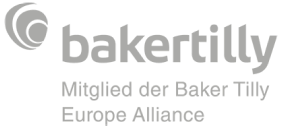The EU-Taxonomy regulation targets the expansion of sustainable investments and thus implement the European Green Deal. This is to be achieved by redirecting financial flows towards green investments. Therefore, the regulation standardizes a classification system for environmentally sustainable economic activities.
Part of the regulation are six environmental objectives:
- climate change mitigation
- climate change adaption
- the sustainable use and protection of water and marine resources
- the transition to a circular economy
- pollution prevention and control
- the protection and restoration of biodiversity and ecosystems
Within the framework of the EU-Taxonomy, it has to be distinguished between Taxonomy eligibility and Taxonomy alignment. The economic activity of a company is Taxonomy eligible if it is covered by the technical screening criteria of the EU-Taxonomy. If the Taxonomy eligible activity meets the following requirements, it is considered Taxonomy aligned:
- Substantially contribution for achieving one or more environmental objectives
- No significant harm on other environmental objectives
- Respecting a certain minimum social protection (for human rights and employees)
- According to the technical screening criteria
Non-financial undertakings must disclose the shares of Taxonomy eligible and Taxonomy aligned economic activities in turnover, CapEx and OpEx.
Our services in connection with the EU-Taxonomy
In relation to the EU-Taxonomy, we can support you in the following areas:
- Classification of economic activities
- Evaluation of the Taxonomy eligibility and alignment
- Identification of the relevant EU-Taxonomy criteria set and analysis of business activities regarding Taxonomy eligibility and alignment
- Preparation of the collection and evaluation of Taxonomy turnover, CapEx, and OpEx
- Evaluation of the Taxonomy aligned economic activities, including supporting evidence
- Coverage of the Taxonomy turnover, CapEx, and OpEx as well as reporting according to Article 8 and reporting in the non-financial statement of the management report


